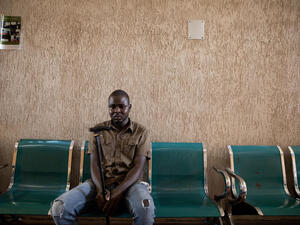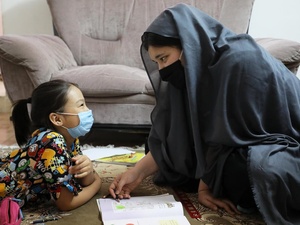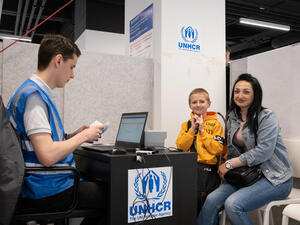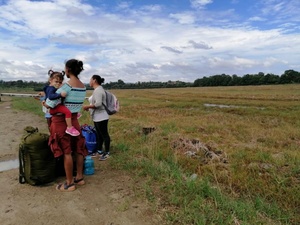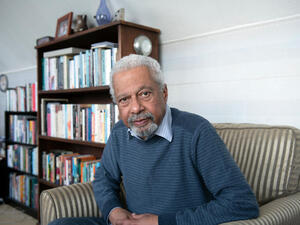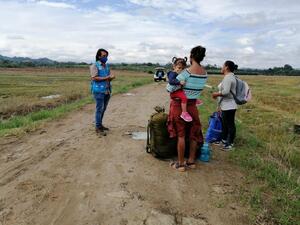UNHCR goes head to head with asylum myths in Austria
UNHCR goes head to head with asylum myths in Austria

UNHCR's billboards play on popular myths about asylum seekers in Austria.
VIENNA, Austria, June 14 (UNHCR) - The UN refugee agency has started a campaign to debunk myths about asylum seekers in Austria, using provocative billboards to change the way asylum seekers are presented in public.
The awareness campaign was launched today ahead of World Refugee Day on June 20. It features two posters displayed in public areas across the country. Each poster shows the face of an asylum seeker combined with a headline that plays on the ironic exaggeration of a popular myth.
"Asylum seekers never ever show their real face," says one. Another reads, "Asylum seekers only play cheap tricks." At the bottom of both posters, it says: "All prejudices at www.unhcr.at", which leads to a special page on the UNHCR Austria website that uses facts to dispel a total of 12 often-repeated but wrong myths on asylum seekers.
"We want to stop the spiral of the prejudiced public debate," explains UNHCR's Representative in Austria, Gottfried Köfner. "We want to change the way asylum seekers are presented in public. We want to put an end to the creation of myths further and further away from reality."
He adds, "Our second aim is to encourage opinion and political leaders who are concerned about prejudices affecting people in flight, to speak up actively and positively."
One of the common misconceptions is the belief that most asylum seekers do not suffer any persecution or human rights abuse upon return. The UNHCR web page provides the facts: According to the official statistics of the Austrian Ministry of Interior, more than 45 percent of the asylum seekers are identified as refugees. Among certain nationalities (like Russians), the recognition rate is even as high as 95 percent.
The website also provides detailed information on several aspects of the Austrian asylum system that have contributed to distorted perceptions of people in flight. Distinct from what is often said by opinion leaders in public, the long waiting period for decisions on asylum claims is not mainly due to tricky asylum seekers but to the lack of sufficiently qualified staff in the asylum system.
And contrary to popular opinion, asylum seekers are not responsible for the majority of drug-related crimes in Austria, says UNHCR. As many as 74 percent of such crimes are committed by Austrian citizens, and not by African asylum seekers who are often blamed. The web page notes that the statistics on drug crimes do not even indicate the number of asylum seekers or of Africans.
To spread the message, visitors to the UNHCR Austria website are encouraged to download pictures of the billboards and send them to friends as e-mail attachments. On top of this, several very popular websites in Austria are carrying banners and pop-ups with the same pictures, attracting more users to the UNHCR website.
The awareness campaign is the brainchild of UNHCR and Publicis Group Austria, which was chosen for its proven track record in social campaigning. The company developed and produced the billboards and pop-ups for free, as did the photographer and models.
The refugee agency hopes that these head-turning billboards will help the Austrian public to face up to its prejudices and to create a more favourable climate for asylum seekers.


